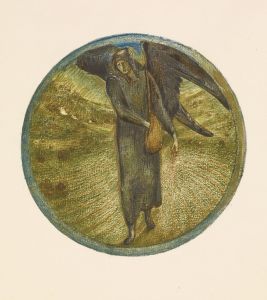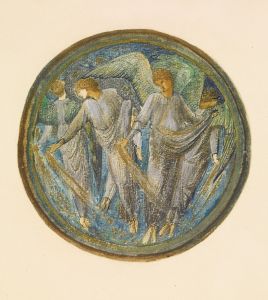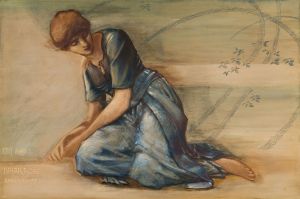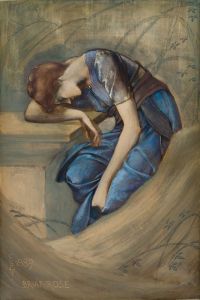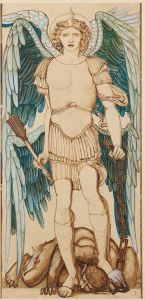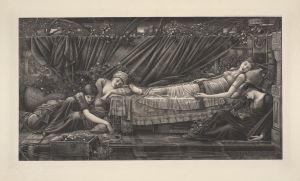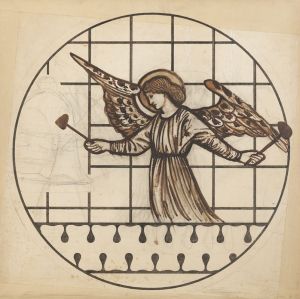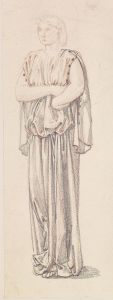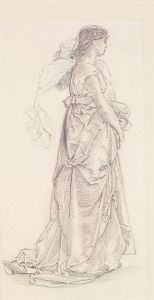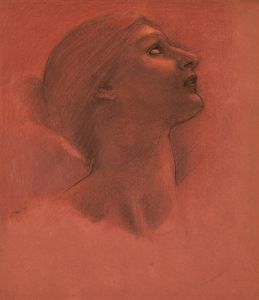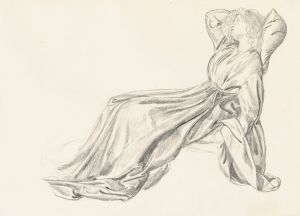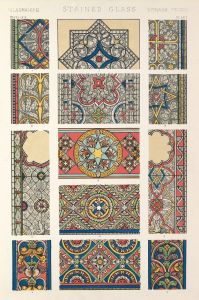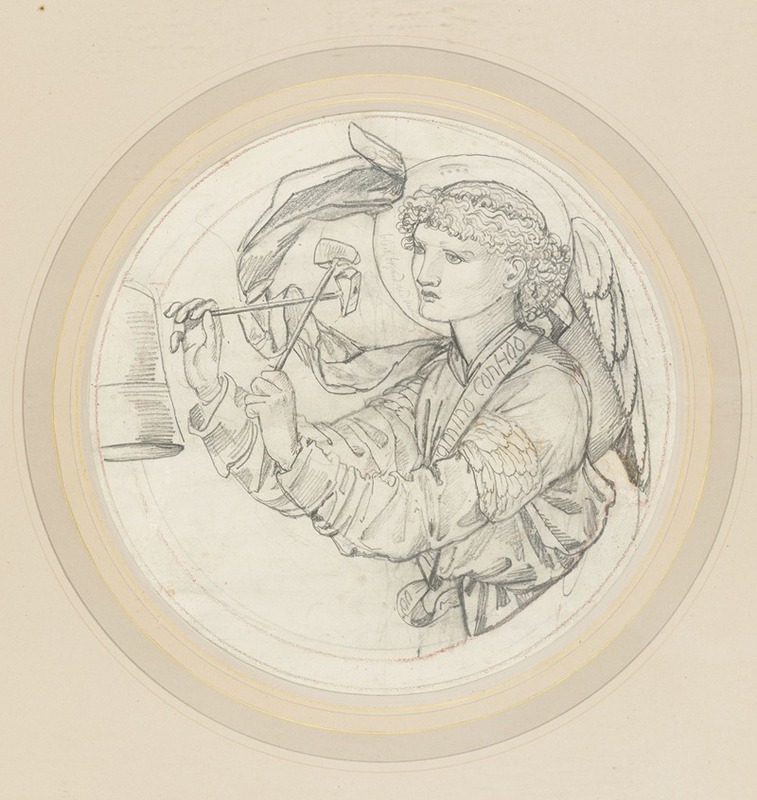
Angel Playing on Bells
A hand-painted replica of Sir Edward Coley Burne-Jones’s masterpiece Angel Playing on Bells, meticulously crafted by professional artists to capture the true essence of the original. Each piece is created with museum-quality canvas and rare mineral pigments, carefully painted by experienced artists with delicate brushstrokes and rich, layered colors to perfectly recreate the texture of the original artwork. Unlike machine-printed reproductions, this hand-painted version brings the painting to life, infused with the artist’s emotions and skill in every stroke. Whether for personal collection or home decoration, it instantly elevates the artistic atmosphere of any space.
"Angel Playing on Bells" is a painting by the renowned British artist Sir Edward Coley Burne-Jones, a prominent figure associated with the Pre-Raphaelite Brotherhood and the later Aesthetic Movement. Burne-Jones was known for his romantic and dreamlike style, often drawing inspiration from mythology, literature, and medieval themes.
The painting "Angel Playing on Bells" exemplifies Burne-Jones's fascination with ethereal and otherworldly subjects. It features an angelic figure, characterized by delicate features and serene expression, playing a set of bells. The angel is depicted with large, graceful wings and is adorned in flowing robes, which are typical of Burne-Jones's depiction of celestial beings. The use of soft, muted colors and intricate details in the angel's attire and the surrounding environment are indicative of Burne-Jones's meticulous attention to detail and his ability to create a sense of harmony and tranquility in his works.
Burne-Jones's work often reflects his interest in the spiritual and the mystical, and "Angel Playing on Bells" is no exception. The painting captures a moment of divine music, suggesting themes of harmony and the celestial nature of music. The angel's serene demeanor and the gentle act of playing the bells evoke a sense of peace and introspection, inviting viewers to contemplate the beauty and transcendence of the scene.
The composition of the painting is carefully balanced, with the angel positioned centrally, drawing the viewer's eye to the focal point of the artwork. The background is typically understated, allowing the figure of the angel to stand out prominently. This focus on the central figure is a common trait in Burne-Jones's work, where the human (or in this case, angelic) form is often the primary subject of interest.
Burne-Jones was part of a broader artistic movement that sought to revive the detailed and vibrant style of art that preceded the High Renaissance, characterized by a return to the abundant detail, intense colors, and complex compositions of early Renaissance art. His work, including "Angel Playing on Bells," often reflects these influences, with an emphasis on beauty, emotion, and a sense of timelessness.
The painting is one of many works by Burne-Jones that explore the theme of angels and the divine. His interest in such subjects was partly influenced by his collaboration with other artists and writers of the time, including his close association with William Morris, with whom he shared a deep appreciation for medieval art and literature.
"Angel Playing on Bells" is a testament to Burne-Jones's skill in blending the real with the ideal, creating images that are both visually captivating and rich in symbolic meaning. The painting continues to be appreciated for its artistic beauty and its ability to convey a sense of spiritual elevation, characteristic of Burne-Jones's broader oeuvre.





